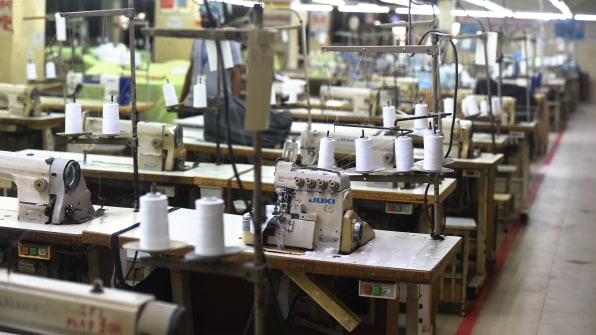H&m Newborn Baby Clothes
If you're a fast fashion lover, there's a good chance that many of the clothes in your closet are made in Bangladesh. For decades, the country has been a hub of low-wage garment manufacturing. But soon, it may be known for something else as well: recycling.
Last week, fast-fashion brands that manufacture in Bangladesh—including H&M and Target—joined forces to create an ambitious clothing recycling system in the country. The initiative was spearheaded by the Global Fashion Agenda, a Danish sustainability nonprofit, and what sets it apart from other recycling efforts is that it brings together many players in the fashion industry, from brands to enormous factories to companies building cutting-edge recycling technology. Collectively, these organizations want to make Bangladesh a leader in apparel recycling. And it makes sense: The country is the second-largest clothing producer in the world and has particular expertise in fast fashion.
The production of new clothes is destroying the planet. Today, more than 100 billion garments are churned out annually, and less than 1% of material used to manufacture these clothes is made from recycled clothing. The process of extracting raw materials—like oil for synthetic fibers or cotton—then shipping them around the world, is extremely carbon intensive, and it is one reason that the fashion industry is responsible for between 4% and 10% of the world's carbon emissions, depending on how you calculate. Researchers have found that using recycled fabric cuts down on the carbon footprint of a garment (though the exact reduction depends on the specific method of recycling).

Bangladesh is a prime spot for a mass-recycling experiment. It is ground zero for fast-fashion manufacturing thanks to its low-wage workforce. This means that a lot of cheap, low-quality clothes pass through its borders, leading to a lot of waste. (This cheap labor often comes at a high human cost: Many Bangladeshi workers face terrible working conditions; in 2013, the Rana Plaza garment factory collapsed, killing 1,134 workers.) Factories are full of clothes that were thrown out because of a manufacturing error and bolts of fabric that were ordered but never used—plus all the scraps leftover from regular production. COVID-19 has only exacerbated this problem. The pandemic has hit the fashion industry hard and many brands have cancelled orders. According to the Global Fashion Agenda, wasted fabrics and finishes are piling up at factories. The goal of the recycling project is to capture these and other waste materials, then transform them back into new clothes.
Reducing the carbon footprint of the fashion industry is, of course, good for the planet as a whole, but it is also good for Bangladesh specifically. As the Hindustan Times points out, it is a low-lying nation that will be hard hit by climate change, especially rising sea levels and flooding.
There are now many exciting new technologies on the market that are focused on turning old textiles into new textiles, including breaking down fibers into polymers then reconstituting them. The Bangladesh project enlists 13 tech companies, including Lenzing (which creates the widely used Tencel fabric from wood pulp) and Renewcell (funded in part by H&M Group). While many of these recyclers partner with individual brands on small projects, getting large manufacturing facilities on board could help them scale up quickly.
In practice, the Global Fashion Agenda would help bring these recyclers into Bangladeshi manufacturing facilities so that factory owners begin to use them into their operations. The brands would work with the factories to quickly begin incorporating the recycled materials into upcoming collections. In many ways, this is simply accelerating a process that is already in motion. Many brands are already under pressure from their consumers to use more sustainable materials and have more eco-friendly manufacturing methods, which has spurred brands like Adidas to use recycled plastic and H&M to invest in recycling technology. Factories, too, are aware of the latest recycling technologies: The Global Fashion Agenda is simply putting the pieces together and coordinating what can be a complex global operation.
This project has the potential to curb pollution and carbon emissions in the industry—but it also stands to benefit fashion companies. Once recycling technology scales up, it could be much cheaper to use recycled fabrics that new fabrics. Indeed, the nonprofit sustainability organization the Ellen MacArthur Foundation calculates that more than $100 billion worth of materials is lost every year when brands throw them out. The financial argument is important, particularly in the fast-fashion industry, which tends to be driven by price.
Still, sustainability experts warn that recycling is not going to save the planet if clothing consumption continues to increase, and fast-fashion brands continue churning out billions of clothes every year. In addition to recycling, consumers need to buy less and wear each item longer. And brands need to design and market clothes so they are more durable—which is diametrically opposed to how fast-fashion brands design today.
Source: https://www.fastcompany.com/90604447/made-in-bangladesh-may-soon-mean-your-clothing-is-much-more-sustainable
0 Response to "H&m Newborn Baby Clothes"
Post a Comment